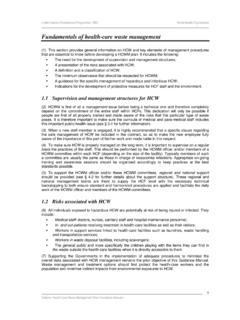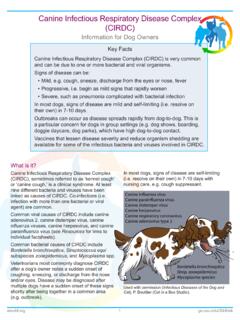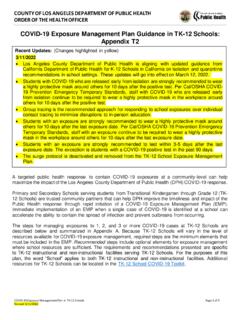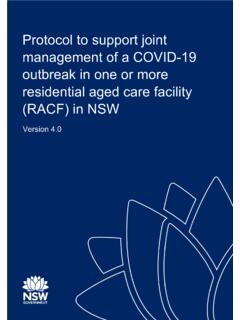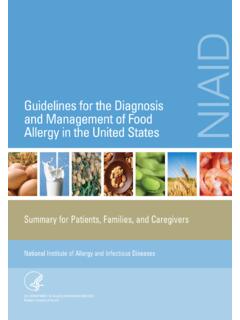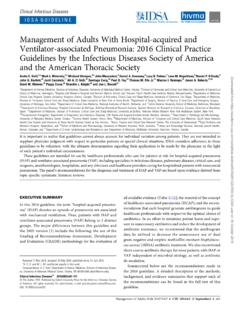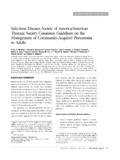Transcription of Category A and B Biological Agents - Centers for Disease ...
1 Appendix 6. Category A and B Biological Agents Category A Agents The public health system and primary healthcare providers must be prepared to address various Biological Agents , including pathogens that are rarely seen in the United States. High-priority Agents include organisms that pose a risk to national security because they can be easily disseminated or transmitted from person to person; result in high mortality rates and have the potential for major public health impact; might cause public panic and social disruption; and require special action for Public Health Preparedness: public health preparedness.
2 Category A Agents are listed below: Anthrax (Bacillus anthracis). Botulism (Clostridium botulinum toxin). Plague (Yersinia pestis). Smallpox (variola major). Tularemia (Francisella tularensis). Viral hemorrhagic fevers (filoviruses [ , Ebola, Marburg] and arenaviruses [ , Lassa, Machupo]). Category B Agents 161. The second-highest priority Agents include those that are moderately easy to disseminate; result in Mobilizing State by State moderate morbidity rates and low mortality rates; and require specific enhancements of CDC's diagnostic capacity and enhanced Disease surveillance.
3 Category B Agents are listed below: Brucellosis (Brucella species). Epsilon toxin of Clostridium perfringens Food safety threats ( , Salmonella species, Escherichia coli O157:H7, Shigella). Glanders (Burkholderia mallei). Melioidosis (Burkholderia pseudomallei). Psittacosis (Chlamydia psittaci). Q fever (Coxiella burnetii). Ricin toxin from Ricinus communis (castor beans). Staphylococcal enterotoxin B. Typhus fever (Rickettsia prowazekii). Viral encephalitis (alphaviruses [ , Venezuelan equine encephalitis, eastern equine encephalitis, western equine encephalitis]).
4 Water safety threats ( , Vibrio cholerae, Cryptosporidium parvum).










